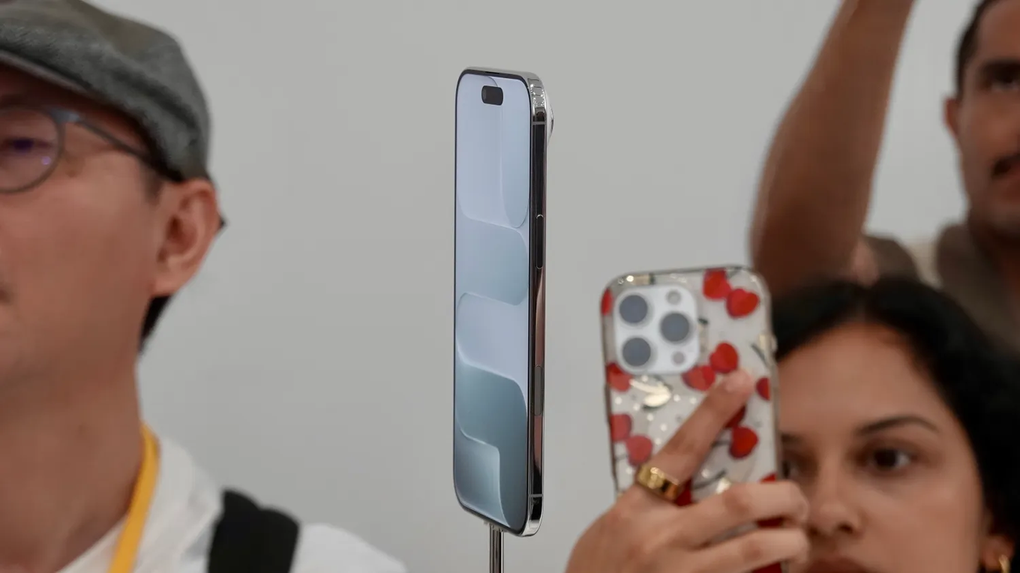
iPhone Air is impressively thin, only 5.6mm (Photo: 9to5Mac).
As scheduled, the technology world holds its breath waiting for an event, this year called "Awe Dropping" taking place at the Steve Jobs Theater - where Apple unveils the next generation of iPhone.
The product not only shapes trends but also measures the entire mobile industry.
This year, with the launch of the iPhone 17 series, besides many surprises about improvements and technology upgrades; somewhere there are still many users who feel disappointed and frustrated.
At the "Awe Dropping" event on the night of September 10, Apple introduced four new models including the iPhone 17, 17 Pro, 17 Pro Max and a completely new element that has long been rumored - the iPhone Air.
But after the spotlight dimmed and the specs were dissected, a big question was raised across many tech forums: Where is Apple really taking its users?
iPhone Air: Thin but "out of breath"
The name “Air” evokes images of lightness, refinement, and premiumness—a philosophy that has made the MacBook and iPad successful.
The iPhone Air is, as its name suggests, an ultra-thin device. We have to admit that it is a physical engineering marvel from Apple.
The phone is for those who crave minimalism, who want a device that almost “disappears” in a pocket or bag. However, to achieve that thinness, Apple had to pay a heavy price in terms of features.
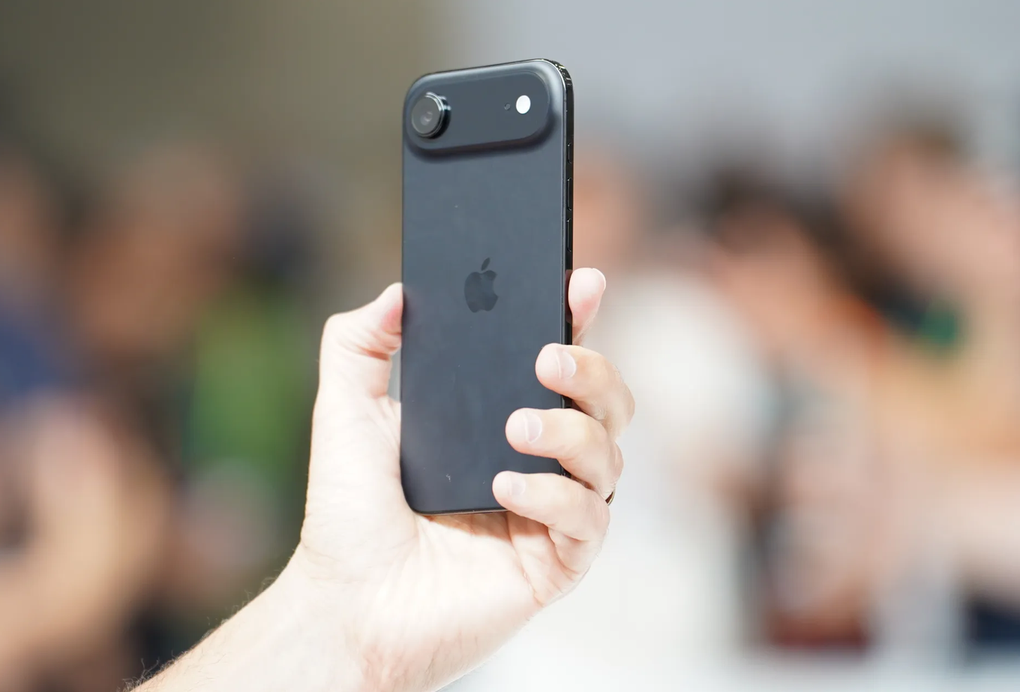
The thin body design makes the iPhone Air's camera cluster protrude significantly (Photo: The Verge).
The biggest and most obvious issue is the camera. While the standard iPhone 17 has two lenses, the iPhone Air only has one.
While Apple has touted the power of “computational photography” and machine learning, for the average user, fewer lenses mean less flexibility and less quality, especially when compared to the 48MP ultra-wide lens on the iPhone 17.
Having the same number of cameras as the low-cost iPhone SE makes the iPhone Air even more awkward in the high-end segment.
The “sacrifice” on the iPhone 17 Air doesn’t stop there. The battery life of this device is significantly worse than that of the iPhone 17 products, with only 3,149 mAh.
Apple seems to acknowledge this by releasing a new MagSafe battery accessory, but it's only fully compatible with the iPhone Air due to the protruding camera design of other models getting in the way.
This means that to get the same battery life, iPhone Air users have to spend an extra $99 for the MagSafe battery — an accessory that goes against the original "thin and light" philosophy.
Additionally, the iPhone Air cuts back in other key areas including 20W wireless charging instead of 25W, slower wired fast charging (30 minutes for 50% battery instead of 20 minutes), and no support for high-speed mmWave 5G.
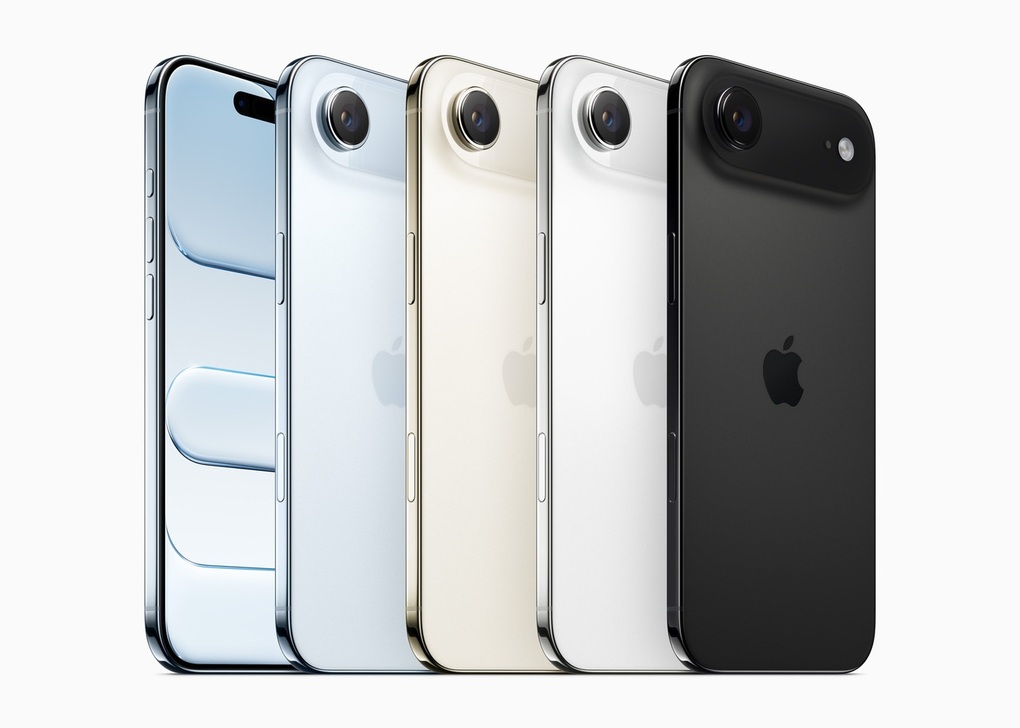
However, Apple confidently claims; the iPhone Air has been optimized to be able to equip the largest battery possible in an ultra-thin phone and "enough to use for a day".
With four color options including black (space black), white (cloud white), pale yellow and sky blue (ceiling), the iPhone Air is more like an expensive fashion accessory than a comprehensive smartphone.
Perhaps this phone will suit those who prioritize style over performance, a segment that Apple seems to be trying to create.
iPhone 17 Pro: Powerful but unsightly?
If the iPhone Air was a trade-off in features, the iPhone 17 Pro is a trade-off in aesthetics.
In theory, this is the iPhone that power users have been dreaming of.
It's powered by the powerful A19 Pro chip, a first-of-its-kind vapor chamber that keeps the device cool, a 48-megapixel triple camera, and impressive battery life.
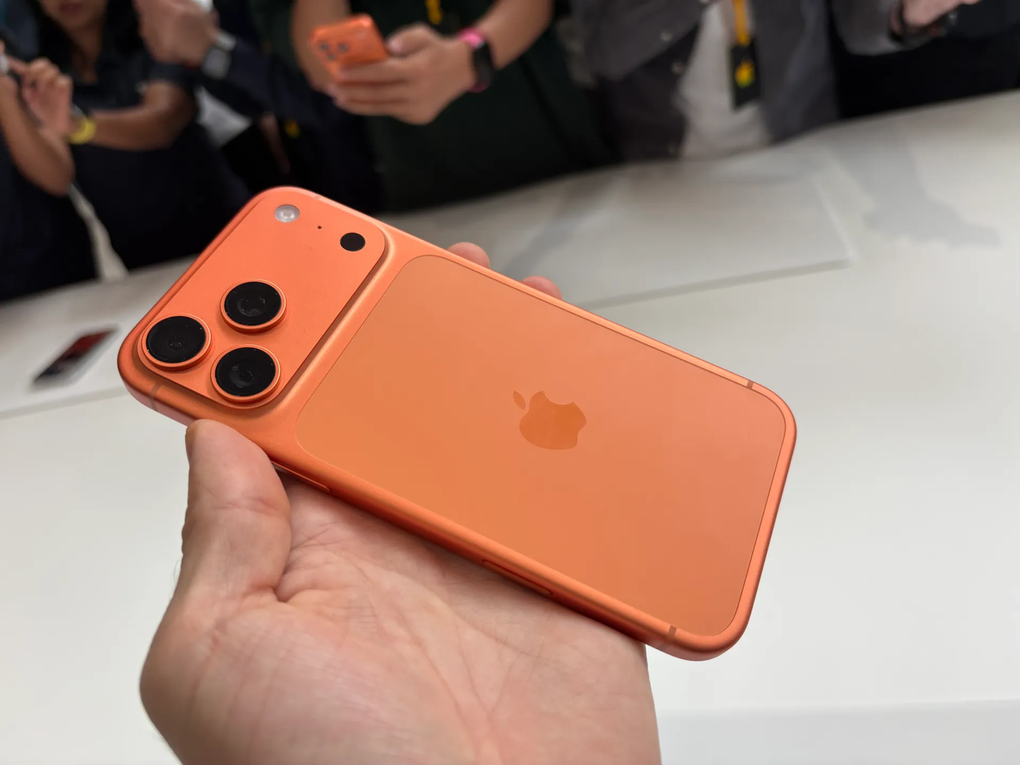
Back of iPhone 17 Pro (Photo: The Verge).
This is a very powerful phone. However, all that power is wrapped in a design that many users sharing on technology forums have not hesitated to call "ugly".
The rear camera cluster, which has been a point of controversy for generations, is now twice as large, breaking the balance and minimalism that are the legacy of designer Jony Ive.
Just below the camera cluster is an oddly shaped MagSafe area — it looks like a bank card slot, a somewhat puzzling design decision.
However, it is clear that at first when users receive a product with many aesthetic changes, it is normal to feel that it is not pleasing to the eye.
Chris Taylor, a veteran tech journalist, shared his frustration: “I’m on an iPhone 14 Pro and ready to upgrade. But the new design has killed all interest. I’d rather spend $100 to replace the screen and see the scratch on my old phone as a “personality mark” than spend over $1,200 on a device I don’t want to look at.”
When a new design makes users want to stick with the old product, that's a red flag.”
The Shadow of AI
The core issue with the iPhone 17 series is not just the individual products, but the strategy they represent.
Apple seems to be dividing its high-end users into two camps: "Airheads" - fashion lovers, willing to sacrifice performance in exchange for thinness and lightness, and "Pros" - power-hungry people, forced to accept an unattractive design.
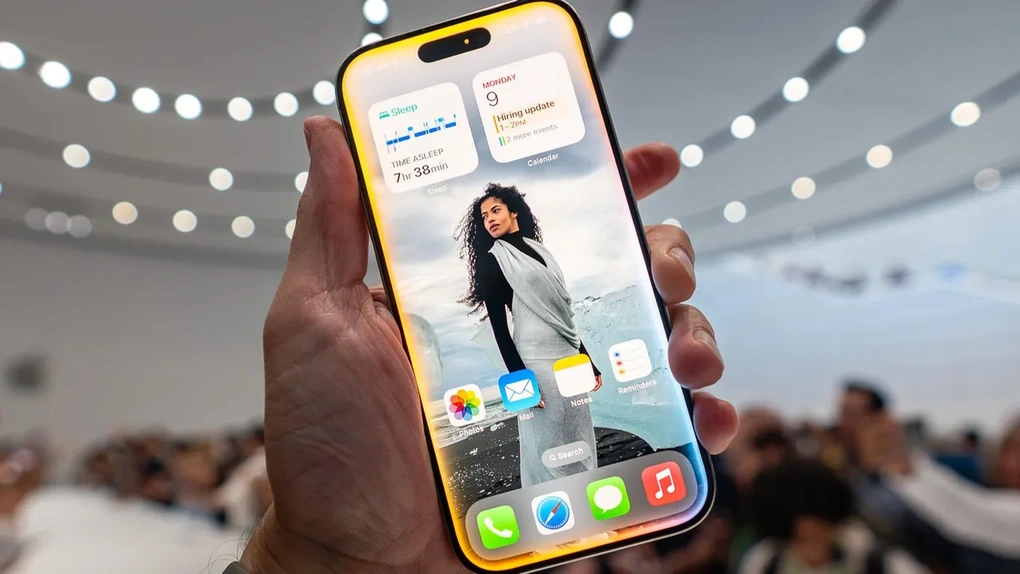
AI still can't make an impression on iPhone 17 (Photo: ZDNews).
This choice leaves out a large group of users in the middle: People who want a phone that's both powerful and beautiful, the perfect balance of form and function that Apple has mastered.
This becomes even more evident when placed in the context of the ongoing AI revolution. While competitors like Google and Samsung have turned AI into the soul of Pixel phones and the Galaxy S25 series, Apple has been slow.
The iPhone 17 launch event only mentioned AI in passing, mainly the features that had been rumored before. In particular, the virtual assistant Siri, which was expected to be "smarter", was delayed until 2026.
This makes hardware upgrades like the A19 Pro chip less meaningful. What's the point of a faster chip when the core software still can't deliver groundbreaking smart experiences?
Many experts believe that Apple may have to rely on third-party technology like Google Gemini for future AI features, which shows a worrying lag.
The iPhone 17 series will likely continue to sell well thanks to the strength of its brand and loyal ecosystem. But for observers and hardcore users, it leaves a somewhat disappointing aftertaste.
This is an iPhone generation of compromises: Compromising features for thin design (iPhone Air), compromising design for high performance (Pro), and compromising AI innovation across the entire lineup.
The general feeling is that Apple has had a transition year. Many users, instead of opening their wallets, decided to wait; but there are also many people who are willing to upgrade to experience the new technologies that Apple equipped on the iPhone 17 series or the super-thin iPhone Air.
Hopefully, Apple's design team will regain its flair, and more importantly, Apple needs a compelling AI story to show that they're still a leader, not a follower.
Now, the iPhone 17 symphony depends entirely on how users will receive it?
Source: https://dantri.com.vn/cong-nghe/not-tram-tren-dong-iphone-17-20250911004947047.htm




![[Photo] Prime Minister Pham Minh Chinh receives Minister of Foreign Affairs and Cooperation of Timor-Leste](https://vphoto.vietnam.vn/thumb/1200x675/vietnam/resource/IMAGE/2025/9/16/b0e99fd9a05846e4b6948c785d51d51f)
![[Photo] General Secretary To Lam receives Assistant to the President of Russia, Chairman of the Federal Maritime Council of Russia Nicolai Patrushev](https://vphoto.vietnam.vn/thumb/1200x675/vietnam/resource/IMAGE/2025/9/16/813bd944b92d4b14b04b6f9e2ef4109b)
![[Photo] General Secretary To Lam attends the National Conference to disseminate and implement 4 Resolutions of the Politburo](https://vphoto.vietnam.vn/thumb/1200x675/vietnam/resource/IMAGE/2025/9/16/70c6a8ceb60a4f72a0cacf436c1a6b54)
![[Photo] National conference to disseminate and implement 4 Resolutions of the Politburo](https://vphoto.vietnam.vn/thumb/1200x675/vietnam/resource/IMAGE/2025/9/16/5996b8d8466e41558c7abaa7a749f0e6)































































































Comment (0)